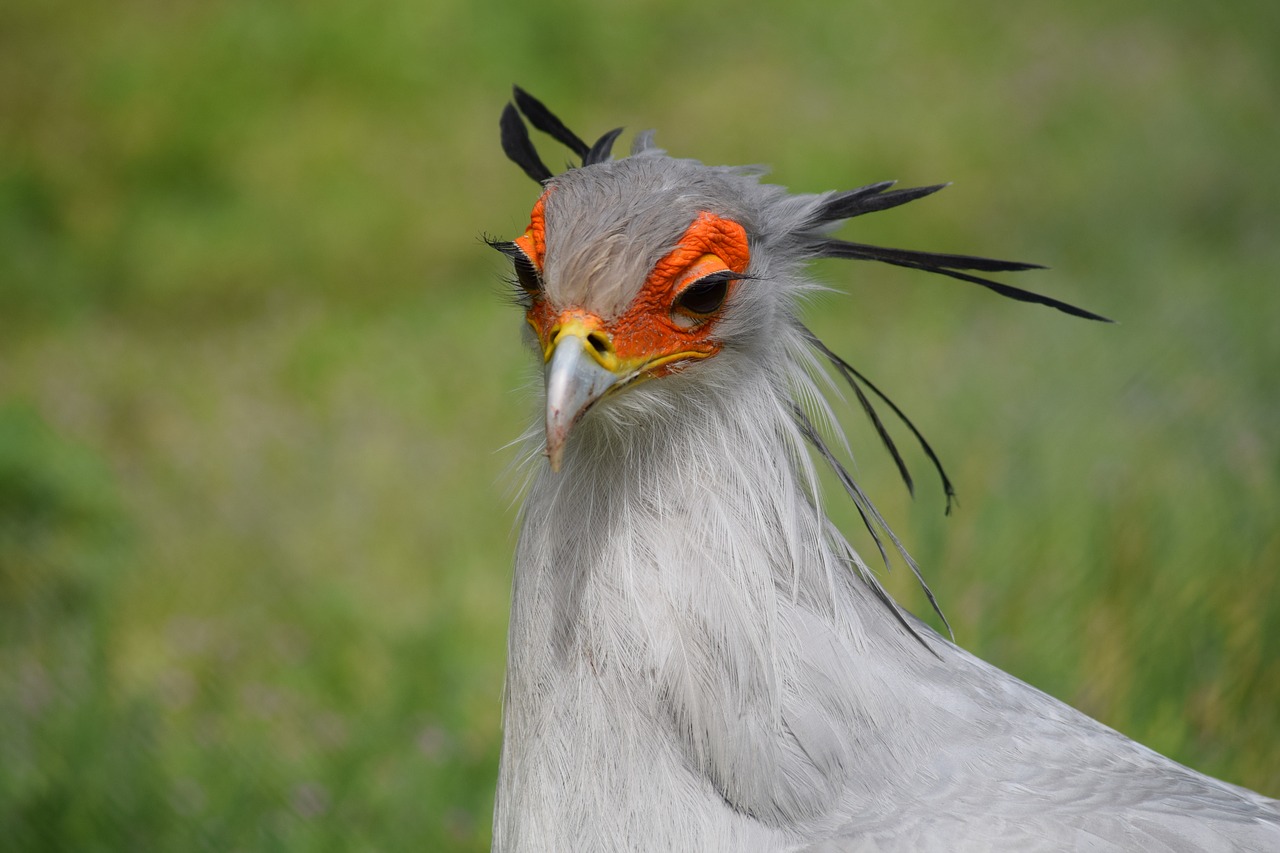The origins of the term “Secretary bird” are a matter of debate (Sagittarius serpentarius). Its popular name is assumed to come from the feather crest.
These feathers resemble quill pens and provide the impression of a secretary with quill pens tucked behind his/her ears. However, a more contemporary idea has been presented, based on a French translation of the Arabic word sagr-et-tair, which means “hunter-bird.” This theory is supported by the Latin names Sagittarius, which means “archer” and Serpentarius, which emphasizes the bird’s ability to hunt reptiles.
Secretary Birds are large eagles with extremely long legs who spend most of their time on the ground. Although they belong to their own family, they are closely related to diurnal raptors.
Their large legs, powerful claws, and razor-sharp beaks make them excellent hunters. Once they’ve located their prey, they usually dispatch it with lightning-fast downward smashes from their powerful feet. When hunting their prey, they will occasionally spread their wings to help them balance.
They generally swallow their prey whole or bite bits out of it with their sharp beak after it has been killed. To defend them from damage caused by prey, particularly snake bites, the bottom half of their legs are coated with strong scales. They may walk up to thirty kilometres each day in pursuit of prey due to their long legs.
Incubation Period
- The female will conduct the majority of the incubation, and the male will feed her throughout this time.
- When the chicks hatch, both the male and mother will feed them by regurgitating food that they had saved in their crops from the previous hunt.
- In hot temperatures, the parents are said to vomit water on the chicks.
- To keep the nest, eggs, and chicks clean, the parents will defecate over the nest’s edge rather than in it.
- All chicks will survive and fledge if circumstances are favorable and food is plentiful.
Longevity
Secretary birds may live in the wild for 10-15 years, but in captivity, they can live for 19-20 years.
Where to spot the African Stomper in Kenya
- Amboseli National Park in Kenya. The Secretary bird, often known as the Secretary Bird, is a big, mostly terrestrial bird of prey. It is endemic to Africa and is often found in the wide grasslands and savanna of the Sub-Saharan area.
- Masai Mara National Reserve you can get a chance to spot one

